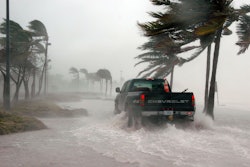
While the changing atmosphere of ocean carrier alliances for containerized cargo isn’t something new, it has been a tumultuous few years in the industry. What used to be four primary alliances has now transformed into three new large ocean carrier alliances.
Effective on April 1, 2017, these three large alliances are considered formal carrier alliances, and were a dramatic display of the vast changes being made in the industry, as they now cover 95 percent of global container trade. The alliances are: the 2M Alliance (MSC, Maersk, Hamburg Sud, Hyundai), the Ocean Alliance (CMA CGM, APL, COSCO, China Shipping, OOCL, Evergreen) and The Alliance. (NYK Group, “K” Line, MOL, Yang Ming, Hapag-Lloyd, UASC).
With the changes in carrier ownership over the past year, some of the “carriers” listed as alliance members are now actually a brand of the carrier owner. For example, Maersk is buying Hamburg Sud, Hapag Lloyd bought UASC, CMA CGM owns APL, and COSCO is purchasing OOCL. Japanese carriers will also form a single entity in April 2018. And consequently, the overall pool of competitors keeps decreasing.
This lack of competition has also allowed the carriers to begin to regain profitability and control rate fluctuations and space availability. And as a shipper looking for alternatives, it can be worrisome that five or six international carriers control all major global trade routes.
Why Were These Alliances Necessary?
Why has there been a need for these alliances at all? Over the past 10 years, the industry has seen the persistent challenge of an imbalance of global supply and demand throughout the market, affecting carriers and shippers alike. At times, there is overcapacity in the market, causing the rates to plunge, but there are also instances in which demand picks up quickly. Carriers have benefitted from these periods of increased demand, causing rates to shoot up and become more volatile and challenging for shippers to allocate and purchase space.
One of the driving factors of this global supply and demand imbalance was Maersk's fleet investment initiative: Maersk wanted to control the global container market and drive existing industry rates, and began making more vessel orders and placing shipping orders from more vessels to achieve this. However, this effort was stymied by the Great Recession of 2007-2009, when supply decreased rapidly for container shipping.
The recession caused a chain reaction for carriers, making it necessary to ensure that freight rates didn’t tumble too far. Some of the methods used to accomplish this were:
- Slow steaming. Carriers tried to conserve fuel that they were burning and extend the time on export routes (for example, from the U.S. back to Asia).
- Vessel idling. Carriers chose to take vessels out of operating streams during strategic times when demand may have slowed, such as after peak season or late winter.
- Organizational cost cutting: As they had limited ability to control overall rate market pricing, carriers cut back within their organization and spent significant time and energy trying to trim costs.
- IT modernization: Carriers made large investments in information technology infrastructure, creating e-shipment sites where bookings could be made online, documentation could be reviewed and the like.
Since April, there have been notable changes to carrier schedules, loops and direct ports of call versus transshipments—and that has impacted transit time and port options. Some carriers have chosen to stop calling low-volume, unprofitable ports and regions. Those carriers with contracted rates in place notified shippers that they would no longer accept cargo for those destinations. Shippers then had to scramble to find alternate carriers many times the cost of contracted rates.
There is a concerted effort on the part of the carriers to collectively examine how different trade lines should be serviced, how they can provide these services in the most competitive way and how their overall costs can be managed most effectively. In light of the rocky path of continued supply and demand imbalance and challenges with overcapacity, the goal is for ocean carriers to truly get in better financial shape for the future.
The Impact of Carrier Alliances
Overall, the potential strengths that have resulted from the carrier partnerships include:
- Fewer competitors controlling more vessels
- More effective management of existing capacity
- Greater alignment of future vessel orders with demand forecasts
- Reduction in operating costs and cleaner negotiations with service providers, such as tugboat operators, container lessors, terminal operators and stevedores
- Expanded scope, allowing alliance members to call on new ports or take advantage of new route opportunities.
However, there are also weaknesses in these alliances and some things to be aware of. For example, there are concerns that one or more members of these alliances may be in debt. The impact of any one member’s financial challenges could be passed off to the rest of the alliance—similar to what the industry saw during the recent Hanjin bankruptcy.
Other concerns within the industry include:
- Terminal congestion. In Asia and Europe especially, ship bunching has become a larger problem due to redrawn vessel rotations—leading multiple vessels to call on a terminal too quickly and causing increased challenges loading and unloading those vessels within the terminals.
- Chassis dislocations. Container ships are calling different terminals and ports, changing where many chassis need to be. This raises concerns that the shipper or importer may be bearing the brunt of that impact and paying any associated dislocation fees.
- Delays in spotting and releasing intermodal trains. Some scheduled intermodal trains have been delayed or had other challenges due to increased congestion and ship bunching in a number of key ports.
Best Practices for Tackling Carrier Alliance Troubles
It’s critical for shippers to understand which carriers are in which alliances and ensure that they have balanced carrier coverage among the three alliances. For any contracted carrier, shippers should be aware of how much of their freight will actually move via the contract-holding carrier versus an alliance member.
If shippers are booking through 3PLs rather than direct carriers, they need to know which carriers and alliances do those 3PLs work with. For example, can the shipper choose the carrier they want to work with under NVOCC contracts? Knowledge is power, and too many shippers were taken by surprise when Hanjin declared bankruptcy a year ago—despite the warning signs building for months. As for any product purchased, it’s important for shippers to be a smart consumer for their ocean services.
It’s also important to remember that, for the most part, carriers are still not consumer oriented. They can be bureaucratic, inefficient and challenging to partner with when problems arise. And responsiveness may also be difficult with many carriers.
However, there are a number of things that shippers can do to mitigate problems as more ocean carriers are partnering together:
- Contract across alliances—not just carriers—to manage risk. Make sure that you partner with diverse service providers that are represented in all three alliances. This will ensure that containers are being carried on different vessels, and it will help to manage your risk if one alliance member runs into financial issues.
- When carriers are offering the same alliance services, sailings, transit times or ports of call, ensure that your carrier is providing a level of service that distinguishes it from its alliance partners.
- Hold your carrier accountable during business reviews and use a global TMS or a 3PL provider that can provide meaningful metrics on quote turnaround times, on time departure/arrival, equipment availability and other meaningful KPIs.
- Contractually require ocean carriers to carry a certain percentage of your cargo on their own vessels, and ensure that a certain percentage is on specific vessels within an alliance.
- Reserve the right to reduce your quantity commitment (MQC) based on specific declining carrier metrics such as on time performance, services scope, transit requirements and direct ports of call.
- Review your carriers’ financial results frequently. A carrier’s “Z-Score” can tell you a great deal about its current financial health.
- Be carrier-friendly: use electronic portals, load-legal weights and meet required regulatory or documentation cut-offs.
While much is changing, shippers must do their due diligence to ensure they’re receiving the service and cost required for their cargo.














